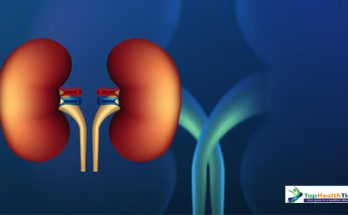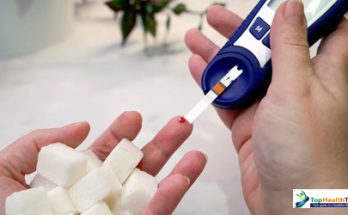Prediabetes is a serious health condition where blood sugar levels are higher than normal but not yet high enough to be diagnosed as diabetes. Without intervention, prediabetes often progresses to type 2 diabetes and increases the risk of heart disease and stroke. Fortunately, there are natural ways to prevent this progression, including adopting a healthier lifestyle and incorporating specific herbs with scientifically proven blood sugar-balancing properties.
This article explores 10 powerful herbs, backed by research, that can help you prevent or manage prediabetes. Presented in an engaging, easy-to-read format, it provides actionable insights for your wellness journey.
Why Focus on Herbs for Prediabetes?
Herbs have long been used in traditional medicine for their therapeutic properties. Modern research confirms that certain herbs can:
- Improve insulin sensitivity.
- Reduce blood sugar spikes.
- Combat inflammation.
Integrating these herbs into your diet can complement lifestyle changes and reduce the risk of developing diabetes.
Top 10 Herbs for Managing and Preventing Prediabetes
1. Cinnamon
Cinnamon is one of the most studied spices for blood sugar control. Its active compounds, cinnamaldehyde and polyphenols, enhance insulin sensitivity and improve glucose metabolism.
Benefits:
- Lowers fasting blood glucose.
- Reduces insulin resistance.
How to Use:
- Add 1/2 teaspoon of cinnamon powder to tea, coffee, or oatmeal daily.
- Sprinkle it on fruits or smoothies.
Scientific Evidence:
A 2003 study published in Diabetes Care revealed that cinnamon improved glucose and lipid profiles in individuals with type 2 diabetes.
2. Turmeric
Turmeric contains curcumin, a potent anti-inflammatory and antioxidant compound. Chronic inflammation is a key contributor to insulin resistance, making turmeric an excellent herb for prediabetes prevention.
Benefits:
- Reduces systemic inflammation.
- Enhances insulin function.
How to Use:
- Add 1 teaspoon of turmeric to curries or stews.
- Prepare “golden milk” by mixing turmeric with warm milk and honey.
Scientific Evidence:
A 2012 study in the Journal of Clinical Nutrition demonstrated that curcumin supplementation delayed the onset of diabetes in prediabetic individuals.
3. Fenugreek
Fenugreek seeds are rich in soluble fiber, which slows carbohydrate absorption and reduces post-meal blood sugar spikes.
Benefits:
- Lowers fasting blood sugar.
- Improves insulin sensitivity.
How to Use:
- Soak 1 tablespoon of fenugreek seeds in water overnight and drink the water on an empty stomach.
- Grind seeds into a powder and mix with food.
Scientific Evidence:
Research in the Nutrition Journal (2017) highlighted that fenugreek seeds significantly improved glycemic control.
4. Ginger
Ginger has bioactive compounds like gingerol and shogaol, which have anti-inflammatory and glucose-lowering properties.
Benefits:
- Lowers fasting glucose levels.
- Reduces insulin resistance.
How to Use:
- Prepare ginger tea by boiling fresh ginger slices in water.
- Add grated ginger to soups, stir-fries, or salads.
Scientific Evidence:
A study in the Iranian Journal of Pharmaceutical Research (2015) found that ginger supplementation improved glycemic indices in type 2 diabetes patients.
5. Holy Basil (Tulsi)
Known as an adaptogen, holy basil helps the body adapt to stress, a significant factor in blood sugar imbalances. It also has hypoglycemic properties.
Benefits:
- Reduces oxidative stress.
- Balances fasting and post-meal glucose levels.
How to Use:
- Drink tulsi tea 2-3 times a day.
- Chew 4-5 fresh tulsi leaves in the morning.
Scientific Evidence:
A study published in Evidence-Based Complementary and Alternative Medicine (2017) highlighted tulsi’s blood sugar-lowering effects.
6. Bitter Melon
This tropical fruit contains compounds like polypeptide-p that mimic insulin. It also helps reduce glucose absorption in the intestine.
Benefits:
- Improves glucose uptake.
- Enhances insulin production.
How to Use:
- Drink 1/4 cup of bitter melon juice daily.
- Include bitter melon in stir-fried dishes.
Scientific Evidence:
Research in the Journal of Ethnopharmacology (2011) confirmed the hypoglycemic effects of bitter melon.
7. Aloe Vera
Aloe vera is more than a skin remedy. Its phytosterols are known to reduce blood sugar and improve pancreatic health.
Benefits:
- Reduces fasting blood glucose.
- Protects pancreatic beta cells.
How to Use:
- Consume 1-2 tablespoons of aloe vera juice daily.
- Ensure it is food-grade aloe vera.
Scientific Evidence:
A meta-analysis in the Journal of Diabetes & Metabolic Disorders (2016) validated the glucose-lowering effects of aloe vera.
8. Garlic
Garlic contains allicin, which enhances insulin sensitivity and reduces inflammation.
Benefits:
- Improves glucose metabolism.
- Lowers fasting blood sugar.
How to Use:
- Eat 1-2 raw garlic cloves daily.
- Add minced garlic to soups, sauces, or salads.
Scientific Evidence:
Studies in Food & Function (2013) showed that garlic supplementation improved glycemic indices and lipid profiles.
9. Berberine
Berberine, found in plants like goldenseal and barberry, has been proven to activate AMPK, a cellular enzyme that helps regulate metabolism.
Benefits:
- Reduces blood glucose levels.
- Improves insulin sensitivity.
How to Use:
- Take berberine supplements (consult a healthcare provider).
Scientific Evidence:
A 2008 study in Metabolism concluded that berberine was as effective as metformin in lowering blood sugar levels.
10. Gymnema Sylvestre
Also called the “sugar destroyer,” Gymnema reduces sugar cravings and absorption while stimulating insulin production.
Benefits:
- Lowers post-meal blood sugar.
- Reduces sugar cravings.
How to Use:
- Drink Gymnema tea.
- Take Gymnema supplements as capsules or powder.
Scientific Evidence:
A study in the Journal of Ethnopharmacology (2004) highlighted its ability to reduce sugar absorption in the intestine.
Table: Quick Overview of Herbs
| Herb | Key Benefit | Key Compound/Effect | How to Use |
|---|---|---|---|
| Cinnamon | Enhances insulin sensitivity | Polyphenols | Add to tea, coffee, or meals. |
| Turmeric | Reduces inflammation | Curcumin | Use in curries or drink golden milk. |
| Fenugreek | Slows carb absorption | Soluble fiber | Drink soaked seed water. |
| Ginger | Lowers fasting glucose | Gingerol | Brew tea or add fresh to recipes. |
| Holy Basil (Tulsi) | Reduces oxidative stress | Adaptogens | Chew fresh leaves or drink tulsi tea. |
| Bitter Melon | Mimics insulin | Polypeptide-p | Consume juice or cook in dishes. |
| Aloe Vera | Supports pancreas | Phytosterols | Drink food-grade aloe vera juice. |
| Garlic | Improves insulin sensitivity | Allicin | Eat raw or add to dishes. |
| Berberine | Activates metabolism enzyme | AMPK activator | Take as supplements. |
| Gymnema Sylvestre | Reduces sugar absorption | Gymnemic acids | Brew tea or take capsules. |
Practical Tips for Incorporating Herbs
- Start Gradually: Introduce one herb at a time to monitor its effects.
- Combine with a Balanced Diet: Herbs work best alongside whole grains, lean proteins, and low-GI foods.
- Stay Consistent: Regular use is key to seeing benefits.
SEO Tips and User Engagement
- Call-to-Action: Share this article with friends who may benefit!
- Quiz: Test your knowledge about herbs for blood sugar control.
- Comments: Let us know which herb you’ll try first!
Related post for Disease and Remedy >>>
References
- Khan, A., et al. (2003). Cinnamon Improves Glucose and Lipids. Diabetes Care.
- Aggarwal, B. B., et al. (2012). Curcumin and Diabetes. Journal of Clinical Nutrition.
- Gupta, A., et al. (2017). Fenugreek and Diabetes. Nutrition Journal.
- Eidi, A., et al. (2013). Garlic Improves Glucose. Food & Function.
- Yin, J., et al. (2008). Berberine and Blood Sugar. Metabolism.




